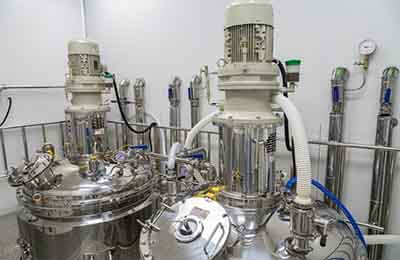同步间歇指令通气与压力支持通气模式进行自主呼吸试验对机体影响的比较
时间:2022-09-14 12:13:37

[摘要] 目的 探讨同步间歇指令通气(SIMV)与压力支持通气(PSV)两种模式进行自主呼吸试验(SBT)对机体的影响是否不同。 方法 对ICU内需要呼吸机支持治疗超过48 h的危重患者,使用SIMV或PSV模式进行SBT。对入选患者进行APACHEⅡ评分,同时记录SBT前、SBT后2 h和SBT后24 h患者的呼吸、血压、心率以及测末梢血糖等指标。 结果 使用SIMV模式进行SBT的有14例(男9例,女5例),使用PSV模式进行SBT的有18例(男15例,女3例),两组患者的APACHEⅡ评分无差异,且SBT前、SBT后2 h及SBT后24 h的呼吸频率、心率、平均动脉压以及末梢血糖等指标也均无差异(均P > 0.05)。 结论 使用SIMV模式或PSV模式进行SBT对呼吸循环及血糖的影响无差异。
[关键词] 同步间歇指令通气;压力支持通气;自主呼吸试验
[中图分类号] R56 [文献标识码] A [文章编号] 1673-7210(2012)07(a)-0040-02
Comparison the impacts of two modes of spontaneous breathing trials on patients with PSV and SIMV
LIU Meimiao1,2 YU Xuetao1,2 QIU Wenbing2 HUANG Xianxi2 FANG Weiqiang2
1.Department of ICU, the People′s Hospital of Longgang District in Shenzhen City, Guangdong Province, Shenzhen 518172, China; 2.Department of ICU, the First Affiliated Hospital of Shantou University Medical Collage, Guangdong Province, Shantou 515041, China
[Abstract] Objective To investigate whether the impacts of two modes of spontaneous breathing trials (SBT) on patients with pressure support ventilation (PSV) and synchronized intermittent mandatory ventilation (SIMV) was the similar. Methods In ICU the critically ill patients requiring mechanical ventilation (MV) more than 48 hours were enrolled in the present study. And the PSV mode or SIMV mode was used during SBT. The APACHEⅡscore was performed for all patients. At the same time the patients′ respiratory rate (RR), heart rate (HR), mean blood pressure (MBP) and blood glucose (BG) were recorded before the SBT and then 2 hours and 24 hours later respectively. The data was analyzed with version 17 of SPSS software. Results There were 14 patients weaned from MV with SIMV and 18 patients with PSV. There was no significant difference in RR, HR, MBP and BG before and 2 hours and 24 hours after weaning between two groups as well as APACHEⅡscore. Conclusion The effects on patients was not significantly different in SBT with PSV modality or SIMV.
[Key words] Pressure support ventilation; Synchronized intermittent mandatory ventilation; Spontaneous breathing trial
自主呼吸试验(spontaneous breathing trials,SBT)是机械通气的重要环节,关系到脱机的成功与否,一直以来备受关注。目前SBT常用的模式有同步间歇指令通气(SIMV)、压力支持通气(PSV)、持续正压通气(CPAP)和“T”管试验等模式,但目前使用何种模式是最恰当的尚无定论[1]。最恰当的模式应该是简单易懂、同步性能好、应用广泛、患者最舒适以及对患者的不良影响最小。为此,笔者通过临床研究,探讨使用目前最常用的脱机模式进行SBT对机体呼吸循环以及血糖等的影响是否存在差异,从而找出对机体不良影响最小的脱机模式,为临床选择合适脱机模式提供重要临床依据。
1 资料与方法
1.1 入选标准
选取2010年1月~2011年6月汕头大学医学院第一附属医院综合ICU收治的内、外科各种原因所致的呼吸衰竭并需要进行机械通气抢救治疗的危重患者作为研究对象。入选标准:机械通气≥48 h,年龄18周岁以上,而无恶性肿瘤、内分泌系统疾病或长期使用激素治疗,有恢复可能的病例。
